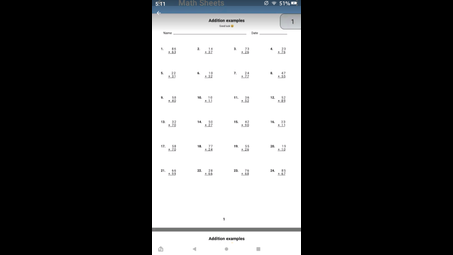What else can I help you with?
Which digit have the same place value facevalue in 76085493?
In the number 76085493, the digit 6 has the same place value and face value. Both its place value and face value are 6, as it is in the millions place. No other digit in this number shares this characteristic.
What number has the same value as the digit 7 in the number 5.73?
70
Which is the only digit that has the same number of letters as its value?
four
Which number has the same value as the digit 4 in 22.48?
0.4
What digit is the same as the digit in the place 1000 times greater?
The digit in a place value is the same as the digit in the place 1000 times greater if both places represent the same digit in a number. For example, in the number 5,678, the digit '5' in the thousands place is the same as the digit '5' in the 5,000s place. However, in most numbers, this will not hold true, as each place value typically has a different digit.
What would be always same of place and face value?
Place value refers to the position of a digit within a number, determining its value based on its location (e.g., in the number 345, the 3 is in the hundreds place). Face value, on the other hand, is the actual value of the digit itself, regardless of its position (e.g., the face value of the 3 in 345 is simply 3). The place value and face value of a digit will always remain the same for that digit in any given number; however, their significance changes based on the digit's position within the number.
What is a least significant bit?
Imagine a decimal number, for example, 123 (hundred and twenty-three). Each digit has a corresponding place-value; the right-most digit has the place-value 1, the next digit (counting from the right) has the place-value 10, the next digit hast eh place-value 100. The right-most position (where the digit "3" is in this example) is in the position of least value - the least significant position. When several bits represent an integer, the situation is the same, except that the numbers are in base-2 instead of base-10 (each position is worth twice as much as the position to the right). But you still have the concept of place-value, and the digit that represents the 1's position is the "least significant bit".
How do you solve place value of an 8 digit number?
The places are always the same no matter what the digits are. The value is obtained by multiplying the place times the digit. Starting from the right, the places in an 8-digit number are ones, tens, hundreds, thousands, ten thousands, hundred thousands, millions and ten millions.
How many times greater is the value of the digit 3 in the number 32517 than in the number 3251?
In the number 32517, the digit 3 is in the thousands place, giving it a value of 3,000. In the number 3251, the digit 3 is also in the thousands place, with the same value of 3,000. Therefore, the value of the digit 3 in both numbers is equal, making it 1 time greater in 32517 than in 3251.
What is the only digit that has the same number of letters as its value?
product? four - 4 letters
If a number has a two of the same digits why does each four have a different value?
The value of a digit depends on its position as well as its face value.
Which number has the least value 03.8 or 3.80?
03.8 and 3.80 have the same value.

